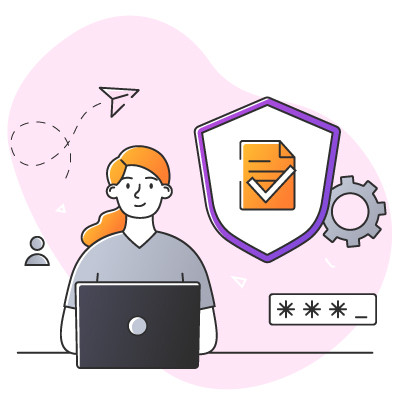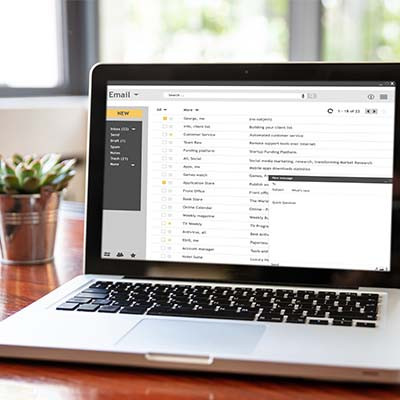With collaboration playing center stage for most businesses, it’s no small wonder that file sharing is such a priority for SMBs. If you want to establish solid file-sharing practices, you need the right solutions. Today, we want to explore four ways you can establish an efficient and secure file-sharing platform.
Advanced Automation Blog
It doesn’t take much to get us to start ranting about the dangers of phishing, and it’s a topic that we won’t stop talking about for some time. Unfortunately, phishing comes in enough forms that it isn’t always so simple to spot. For this week’s tip, we just wanted to run through the different formats phishing can take, focusing on how to identify each type.
The holidays are fast approaching and that means people are going to miss work for one reason or another. If you can get away from the office for a little bit, you’ll want to set up an out-of-office message to ensure that others know you will get back to them when you get back to the office. Here’s how you can set up an autoresponder for an out-of-office message in Microsoft Outlook.
For small businesses, having a fast, reliable Internet connection is needed to run all the digital tools that your staff has come to depend on. If you don’t have the bandwidth in place, you can deal with bottlenecks that can ruin communications, stall productivity, and cause operational issues of all types. Today, we’ll take a look at how to determine the amount of bandwidth you need to support your business’ computing infrastructure.
At first glance, cybersecurity might seem incredibly complicated and difficult to understand, but even a baseline understanding of some of the principles of cybersecurity can go a long way toward protecting your business. Let’s discuss some of the common-sense ways you can keep your business secure, even if you don’t have an internal IT department to ask for help from.
When you run a business, solid decision making is crucial to achieving success. This goes from hiring and managing your staff, choosing the right prospects, supporting your customers, and procuring tools and resources that make your business possible. Today, technology is not only important, it is a major consideration when determining your yearly budgets. Let’s go through a couple of tips on how to make the best technology decisions for your company.
Unfortunately, cybersecurity is a lot easier to reinforce in the office than it is when your team members are working remotely—and even then, it can be a serious challenge to maintain. However, let’s focus on the remote worker’s situation for a few moments and review a few best practices that can help a remote worker stay secure.
While we’re all for efficiency, there are some boundaries that should not be crossed for everyone’s benefit. Take, for instance, the email you use to subscribe to online services. While it may be tempting (or, for some people, automatic) to use your work email address when you sign up for, say, your Netflix account or an online merchant, we wanted to discuss why this is a bad habit to get into that could have lasting consequences.
Typing on your keyboard is something that you do every day, but sometimes you just don’t want to do it. You can give your hands a break and use Microsoft Word’s dictation feature; this lets you use your voice to write in the software. Let’s go over how you might use the feature on a desktop, web browser, or mobile device.
Laptops are pretty great, I think we can all agree, simply due to their portability. Having said that, the one-screen situation that laptops bring with them can certainly get in the way of productivity—particularly for those who are used to using more than one. Let’s discuss why an additional display is so helpful, and what your options may be for hooking one up to your laptop.
You may have been in a position where you tried to implement a technology solution in the past only to find that your staff is simply not responsive to it in any capacity. Maybe they do not see the value in the solution, or they do not understand what issues the solution resolves for your organization. To help you instill the correct mindset in your employees regarding technology, here are some training tips!
When looking to present an idea, the first two options people think of are often to use a video, or to use a slideshow (typically, citing Microsoft PowerPoint). Our question is, why pick? Let’s go over how simple it is to embed a YouTube video right into your next PowerPoint presentation whether you’re using PowerPoint 365 or PowerPoint 2016.
Email—it’s a business tool that we all use and rely on, but (if we’re being honest) it can be a pain to manage properly. Unfortunately, this can also depreciate the value of the solution to its users. To help prevent these problems, we wanted to share a few tips to assist you with your email management.
“By failing to prepare, you are preparing to fail.”
This quote is frequently attributed to Benjamin Franklin, and while it may not have actually been said by the Founding Father, it still teaches a valuable lesson - especially where disaster recovery is concerned. In other words, you need to make sure you have a working disaster recovery strategy - working being the key point.
A business’ IT solutions aren’t the kind of thing that you can worry about once and never touch again - this is why manufacturers and developers are always sending out upgrades. However, you also need to have a strategy ready before you go to implement these upgrades. For this week’s tip, we’ll review how to put this strategy together.





















